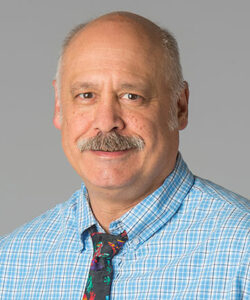Induced hypothermia eyed as possible stroke treatment
Cooling of body currently used here to protect brain following cardiac arrest

Body-cooling techniques that are being used here to treat some heart-attack sufferers might prove beneficial for certain stroke patients, says Dr. Madeleine Geraghty, the director of the Primary Stroke Center at Providence Sacred Heart Medical Center & Children's Hospital.
That will depend, though, on the results of studies elsewhere evaluating that expanded application of the techniques, which induce hypothermia, Geraghty says. One such study currently is under way, and another wrapped up recently, although findings haven't been released.
Geraghty, who also is a stroke neurologist for Rockwood Clinic PS, of Spokane, wrote regional protocols two years ago for inducing hypothermia that are used by hospitals in the Spokane-Coeur d'Alene area to help patients following cardiac arrest.
Induced hypothermia, a lowering of the body temperature to about 92 degrees, is used to treat certain patients who remain unconscious after their hearts are restarted after cardiac arrest, Geraghty says.
"It's not for the heart," she says "It's for the brain. Sometimes we can wake up the heart, but not the brain."
Brain cells don't die suddenly from oxygen starvation when blood flow stops, but sometimes are stunned, she says, adding that cooling slows the body's metabolism and can allow stunned brain cells to wake up.
The likelihood of a patient going home neurologically intact following cardiac arrest used to be 10 percent or less, Geraghty says. With hypothermia treatment, that's improved to 40 percent, she says.
Induced hypothermia might be at least part of the next advancement in treatment for preventing or limiting brain-tissue damage during a stroke, she says, adding, "If it works after cardiac arrest, when blood flow to the whole brain has stopped, why wouldn't it work after a stroke, when flow has stopped in part of the brain?"
Stroke, also called a brain attack, is the leading cause of adult disability and the third leading cause of death in the U.S., according to St. Luke's Rehabilitation Institute, in Spokane. Most strokes occur when clots block blood vessels that supply oxygen to areas of the brain—and can cause brain tissue to die.
Quick treatment as soon as stroke symptoms surface can reduce the extent of brain injury, Geraghty says. Stroke symptoms can include weakness or numbness in the face, arms, or legs; sudden blurred or decreased vision; a sudden and severe headache; difficulty speaking or understanding simple statements; dizziness, loss of balance, or loss of coordination; and nausea or vomiting in combination with any of the other symptoms.
Factors that heighten the risk of stroke include diabetes, obesity, smoking, a high fat diet, narrowing of the arteries, excess alcohol consumption, heart disease, high blood pressure, and stress.
Geraghty says she's awaiting results of studies in which induced hypothermia has been used to help stroke patients.
One study she's tracking, titled Cooling for Acute Ischemic Brain Damage (Cool AID), was expanded by the Cleveland Clinic after a pilot study indicated hypothermia might reduce brain-tissue damage by as much as 20 percent.
Also, she says she is awaiting findings from a study conducted at the University of California San Diego, that employed hypothermia in combination with tissue plasma activator (tPA), a clot-busting drug that's been shown independently to be effective if administered within three hours of the start of a stroke. Facets of that study included treatments with combinations of tPA and a mixture of caffeine and alcohol with and without induced hypothermia, according to a national stroke-trial registry.
Geraghty says induced hypothermia won't be used here to treat stroke patients until it's proven safe and effective in human trials. Because protocols are in place for inducing hypothermia in the post-cardiac-arrest application, however, medical teams here will be positioned to begin inducing hypothermia for expanded uses soon after they are approved.
Hospitals here are using different cooling methods for post-cardiac-arrest patients, ranging from cooling the blood with an intravenous closed-loop heat-exchange system, to surface cooling the body with chilling blankets. Sacred Heart uses a surface cooling system called Arctic Sun that pumps cold fluid through pads that adhere to the patient's body and draw heat out of the body. After the cooling period, which is about 24 hours for a post-cardiac-arrest patient, the temperature of the fluid in the system Sacred Heart uses is raised gradually and the patient's body is warmed in a process that takes another 12 hours.
Geraghty says she thinks induced hypothermia might prove to be helpful for protecting a patient's brain during a stroke, although it might work best in combination with drugs and other treatments.
"It might take multiple agents at the same time," she says. "The main goal is to find something we can do for a patient after a stroke started that makes the brain less likely to die."
Meantime, medical teams here try to counteract or prevent fever in stroke victims.
"Even mild fever makes it worse," she says of stroke-caused brain injury. "Keeping normal temperature is a priority."
The Primary Stroke Center is a team, rather than a physical place, and ensures collaboration among medical professionals who treat stroke patients at Sacred Heart. It's the first stroke center in the country to be certified by the Joint Commission on Accreditation of Healthcare Organizations, Geraghty asserts.
Related Articles


_c.webp?t=1763626051)

_web.webp?t=1764835652)
